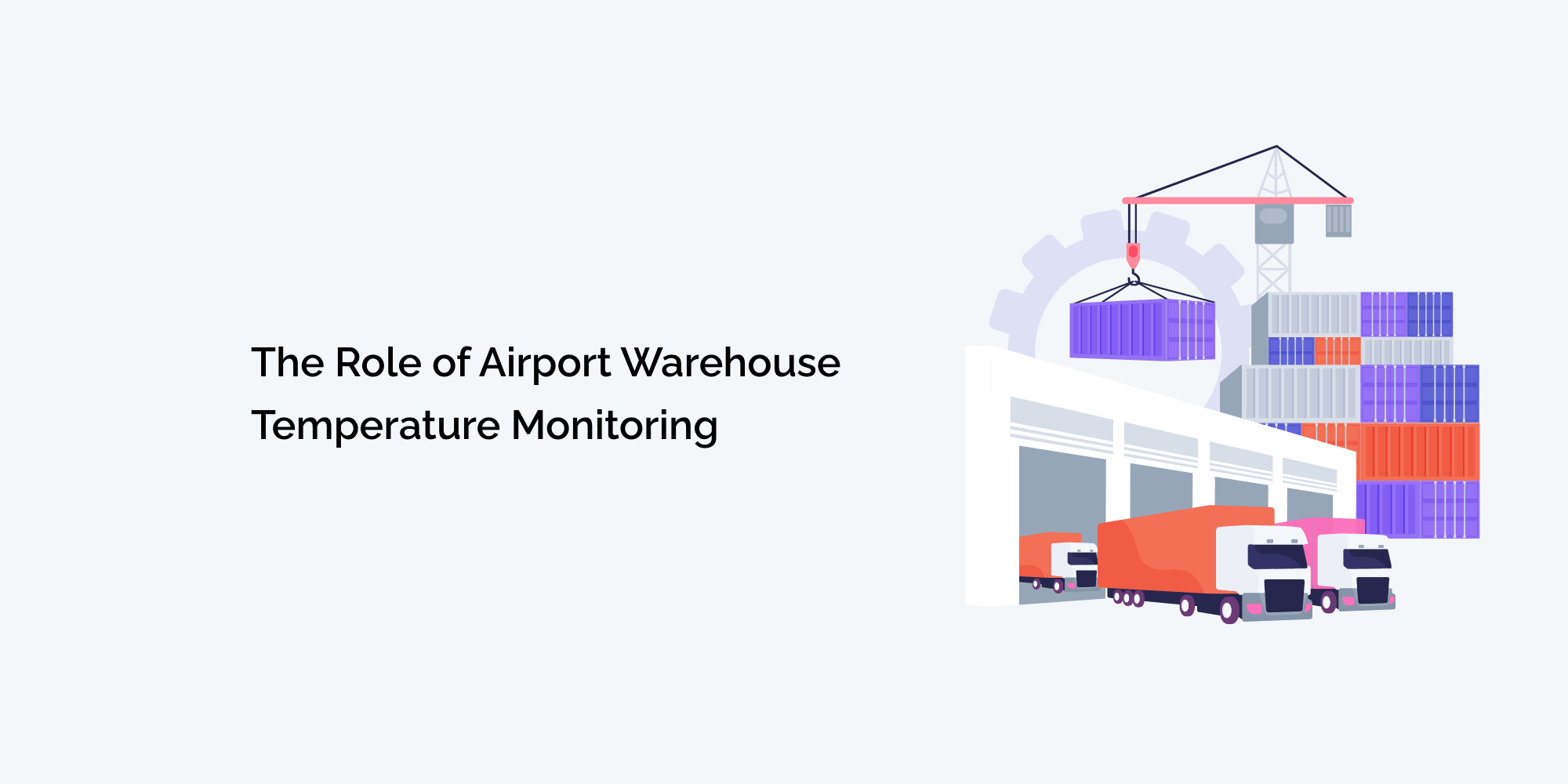In the dynamic world of global commerce, supply chain resilience is of utmost importance. With the increasing complexities in logistics, ensuring the seamless movement of goods while maintaining their quality has become a challenge for airport warehouses.
One critical aspect that significantly impacts supply chain resilience is temperature control. Temperature-sensitive items, such as pharmaceuticals, fresh produce, and high-tech electronics, require precise handling and storage conditions to prevent spoilage and maintain their integrity. To tackle these challenges, airport warehouses are turning to temperature monitoring solutions to enhance supply chain resilience.
In this blog, we will explore the crucial role of temperature monitoring in airport warehouses and its impact on ensuring the uninterrupted flow of goods.
1. Understanding Supply Chain Resilience:
Before diving into the specifics of temperature monitoring, it is essential to grasp the concept of supply chain resilience. Supply chain resilience refers to the ability of a system to adapt and recover swiftly from disruptions or unexpected events. We will explore the significance of supply chain resilience in the context of airport warehouse operations and how temperature monitoring plays a pivotal role in achieving it.
2. The Vulnerability of Temperature-Sensitive Goods:
Temperature-sensitive goods are susceptible to damage if exposed to improper storage or transportation conditions. This section will shed light on the vulnerabilities of such goods, including their sensitivity to temperature fluctuations and the potential consequences of mishandling.
3. The Evolving Role of Airport Warehouses:
Airport warehouses play a central role in the supply chain, acting as hubs for the efficient distribution of goods. Over the years, the role of these warehouses has evolved significantly, transforming from mere storage facilities to sophisticated logistics centers. We will explore how temperature monitoring solutions have contributed to this transformation, ensuring that airport warehouses are well-equipped to handle temperature-sensitive cargo.
4. The Advantages of Temperature Monitoring in Airport Warehouses:
a) Preserving Product Integrity: Temperature monitoring systems ensure that goods are stored and transported within the required temperature ranges, preserving their quality and integrity throughout the supply chain.
b) Compliance with Regulatory Standards: Airport warehouses must adhere to stringent regulatory standards, such as Good Distribution Practice (GDP) and Good Manufacturing Practice (GMP). Temperature monitoring systems play a crucial role in complying with these regulations and meeting the highest industry standards.
c) Risk Mitigation and Damage Prevention: By providing real-time data on temperature conditions, warehouses can proactively identify potential risks and take corrective measures, preventing product damage and loss.
d) Optimized Inventory Management: Temperature monitoring solutions provide valuable insights into inventory levels and conditions, enabling efficient inventory management and reducing wastage.
5. Integrating Temperature Monitoring Systems:
Implementing a temperature monitoring system requires careful planning and integration with existing warehouse management systems (WMS). This section will delve into the key considerations for successful integration, including selecting the right technology, training staff, and ensuring data security.
6. Addressing Challenges and Limitations:
While temperature monitoring is a powerful tool, it does come with its challenges and limitations. This section will discuss potential hurdles faced during the implementation process and how airport warehouses can overcome them to fully leverage the benefits of temperature monitoring.
7. Case Studies:
Examining real-life case studies of airports that have successfully implemented temperature monitoring systems will provide practical insights into the impact of such solutions on supply chain resilience. These case studies will highlight the before-and-after scenarios, quantifiable improvements, and lessons learned.
8. Future Prospects of Temperature Monitoring in Airport Warehouses:
As technology continues to advance, the future of temperature monitoring in airport warehouses looks promising. This section will explore potential advancements in temperature monitoring systems, including IoT integration, AI-driven analytics, and predictive maintenance, and how these developments will further enhance supply chain resilience.
Conclusion:
Temperature monitoring is a game-changer in ensuring the resilience of airport warehouse operations. By implementing advanced temperature monitoring solutions, warehouses can not only comply with regulatory standards but also enhance product quality, minimize wastage, and optimize inventory management.
In the face of unforeseen disruptions, temperature monitoring equips airport warehouses with the ability to respond swiftly and effectively, ensuring an uninterrupted flow of goods and safeguarding their integrity throughout the supply chain. As the industry continues to evolve, temperature monitoring will remain a critical tool in enhancing supply chain resilience and driving the success of airport warehouses in the global logistics landscape.








